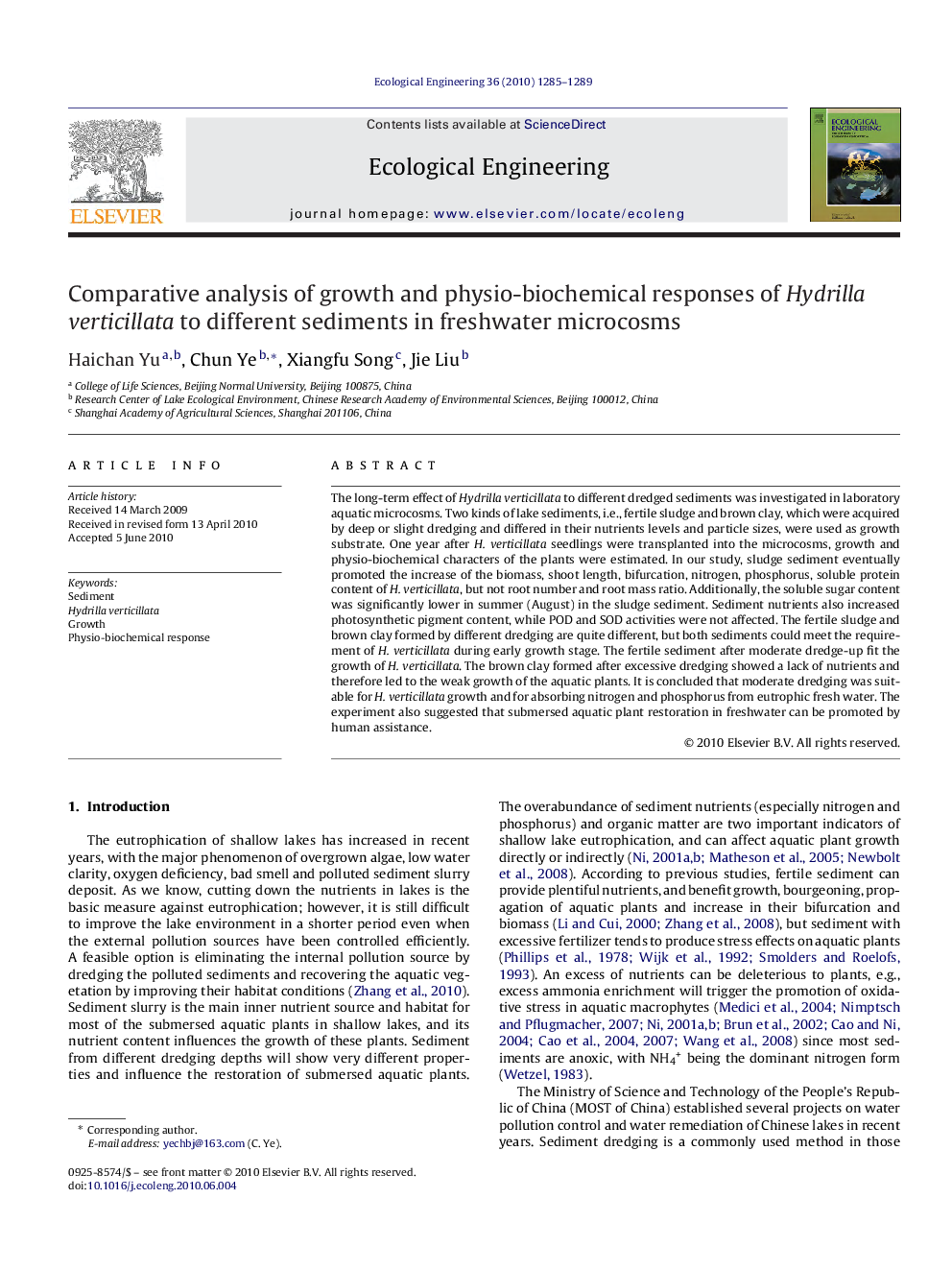| Article ID | Journal | Published Year | Pages | File Type |
|---|---|---|---|---|
| 4390575 | Ecological Engineering | 2010 | 5 Pages |
Abstract
The long-term effect of Hydrilla verticillata to different dredged sediments was investigated in laboratory aquatic microcosms. Two kinds of lake sediments, i.e., fertile sludge and brown clay, which were acquired by deep or slight dredging and differed in their nutrients levels and particle sizes, were used as growth substrate. One year after H. verticillata seedlings were transplanted into the microcosms, growth and physio-biochemical characters of the plants were estimated. In our study, sludge sediment eventually promoted the increase of the biomass, shoot length, bifurcation, nitrogen, phosphorus, soluble protein content of H. verticillata, but not root number and root mass ratio. Additionally, the soluble sugar content was significantly lower in summer (August) in the sludge sediment. Sediment nutrients also increased photosynthetic pigment content, while POD and SOD activities were not affected. The fertile sludge and brown clay formed by different dredging are quite different, but both sediments could meet the requirement of H. verticillata during early growth stage. The fertile sediment after moderate dredge-up fit the growth of H. verticillata. The brown clay formed after excessive dredging showed a lack of nutrients and therefore led to the weak growth of the aquatic plants. It is concluded that moderate dredging was suitable for H. verticillata growth and for absorbing nitrogen and phosphorus from eutrophic fresh water. The experiment also suggested that submersed aquatic plant restoration in freshwater can be promoted by human assistance.
Keywords
Related Topics
Life Sciences
Agricultural and Biological Sciences
Ecology, Evolution, Behavior and Systematics
Authors
Haichan Yu, Chun Ye, Xiangfu Song, Jie Liu,
